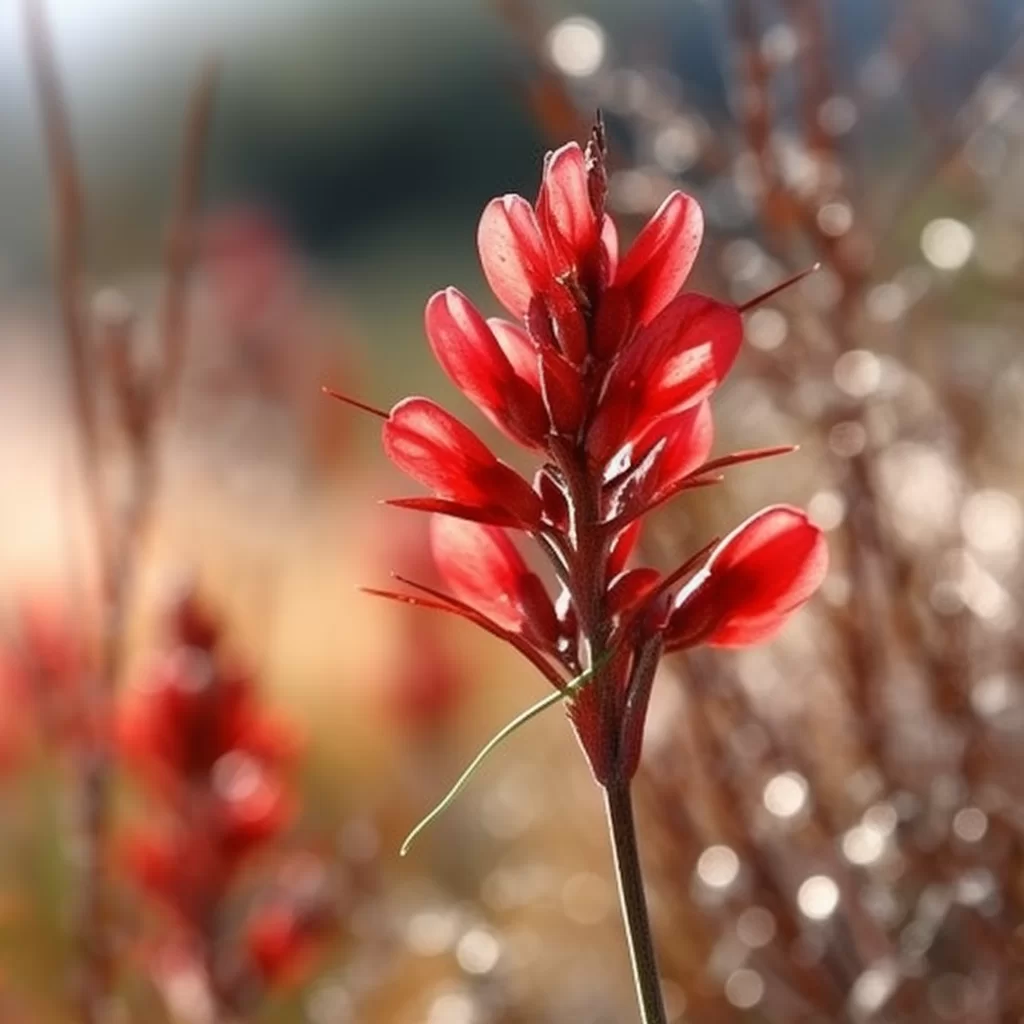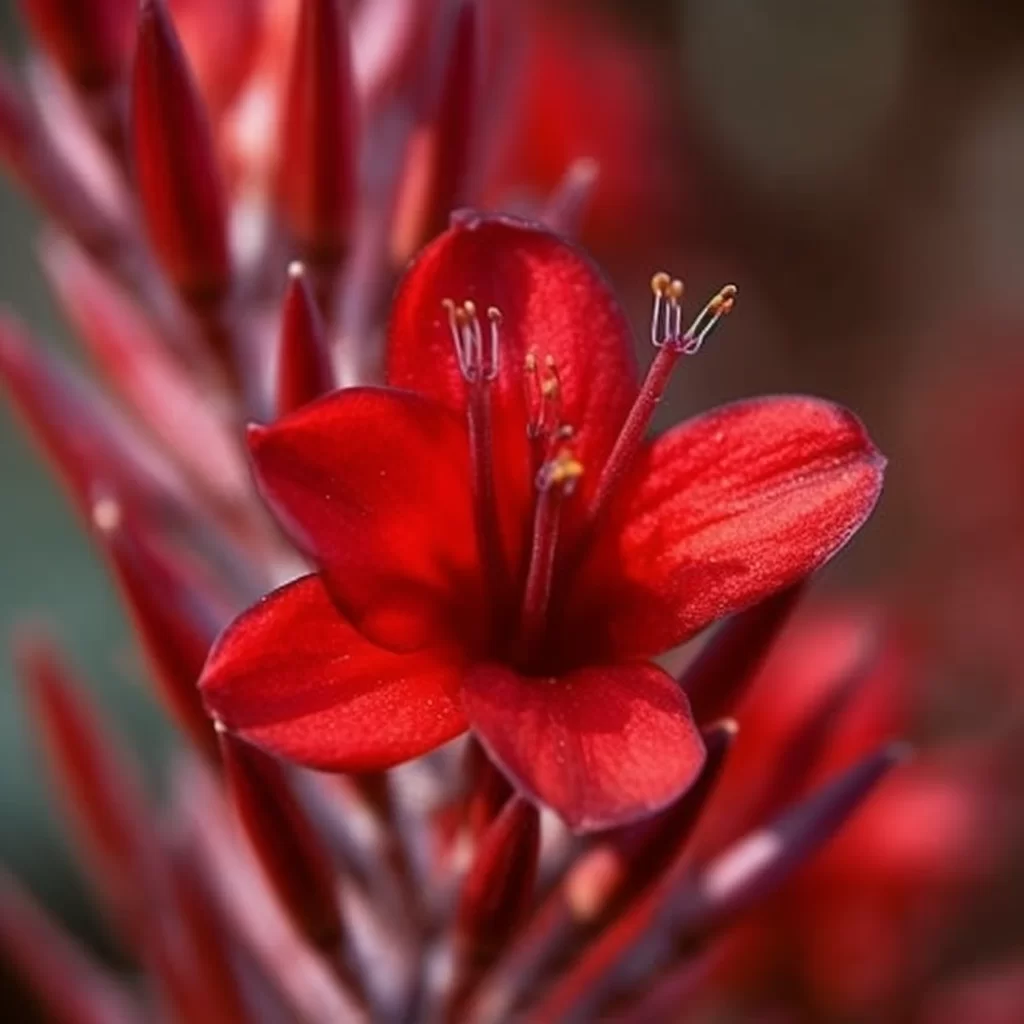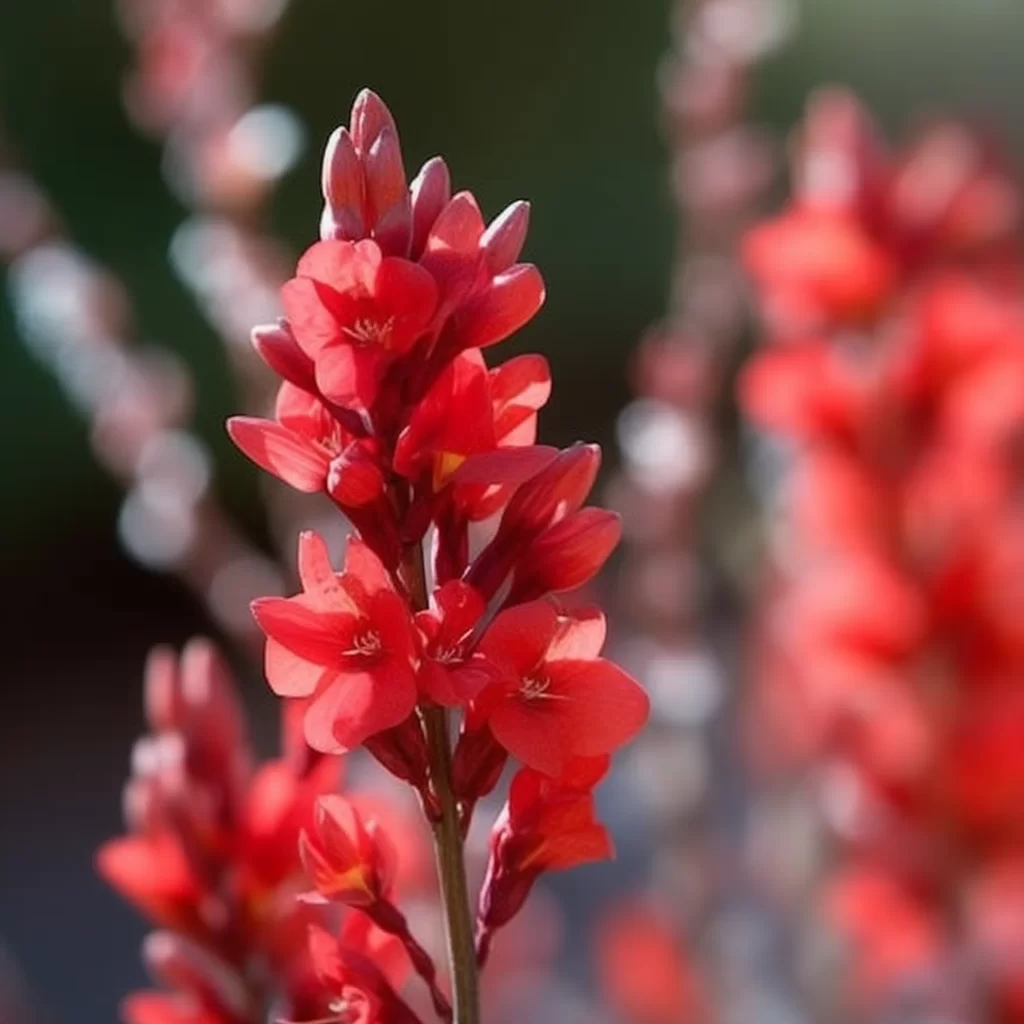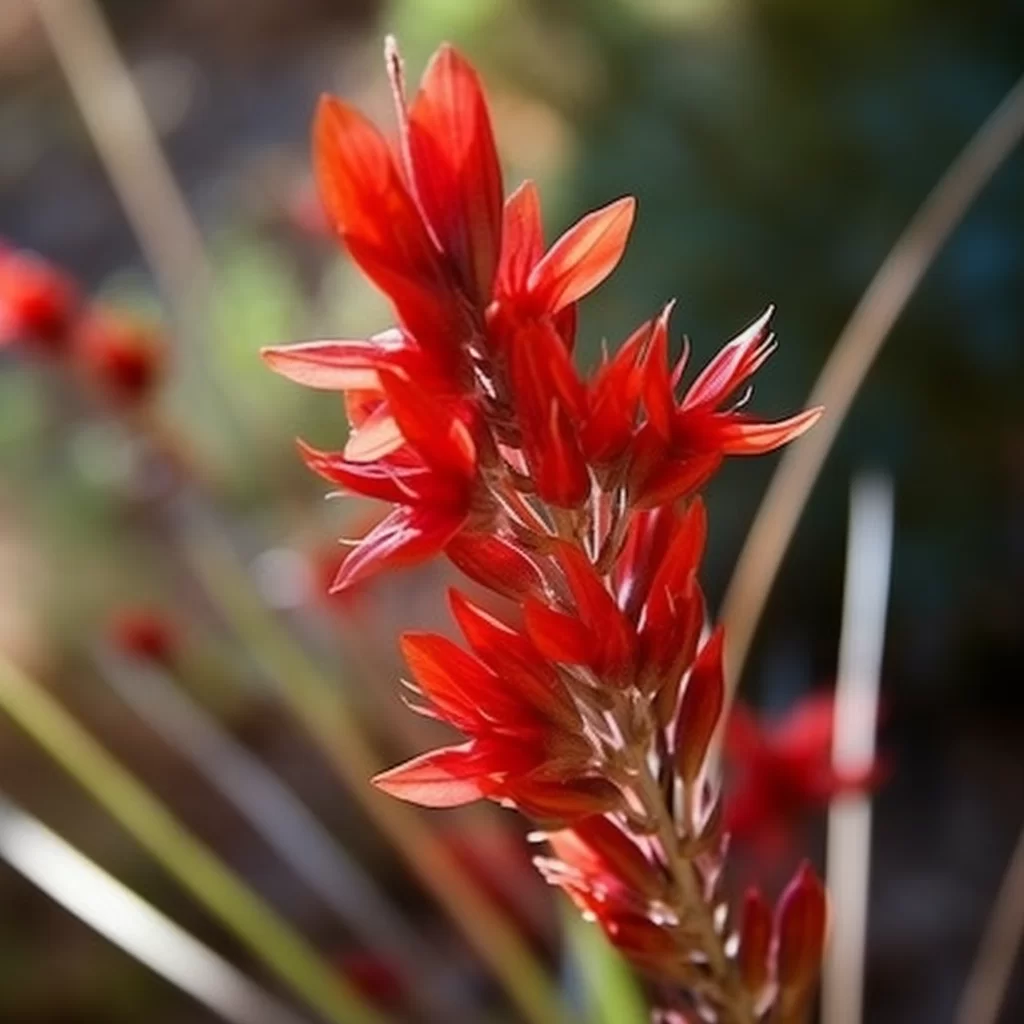Story of Day :
The Red Yucca Plant: A Complete Guide and Care Tips
If you’re searching for an easy-to-care-for plant that can add a pop of color to your outdoor space, the red yucca is an excellent option.
Despite its misleading name, this plant is not a yucca at all but rather belongs to the Agavaceae family.
The red yucca boasts long and slender stems that can reach up to five feet in height.
Atop these sturdy stems grow red and yellow flowers which add a beautiful splash of color to any garden or landscape.Not only does the red yucca look visually stunning, but it’s also incredibly low maintenance which makes it perfect for beginners or those with busy lifestyles.
Once established, this drought-tolerant succulent requires minimal watering and thrives in hot and dry conditions making it ideal for areas with limited rainfall or high temperatures.
With its unique appearance and effortless care requirements, the red yucca is an excellent addition to any garden looking for a touch of exotic flair without adding extra work or attention from its caretakers.
Planting
If you’re thinking about planting a red yucca, it’s best to do so during the spring or fall months.
Doing this ensures that the plant has time to establish itself before any extreme weather conditions come along.
Red yuccas like soil that drains well and contains a good amount of sand or gravel mixed in.
This type of soil is perfect for their roots as it prevents water from pooling around them and causing damage.
One thing to keep in mind when growing red yuccas is that they need plenty of sunlight to thrive.
If you don’t give them enough light, they won’t be able to produce their signature blooms. Planting your red yucca in the right conditions can make all the difference when it comes to how well it will grow.
Planting your red yucca in the right conditions can make all the difference when it comes to how well it will grow.
When choosing a location, make sure there’s plenty of sunshine available as too much shade will stunt its growth potential.
Well-draining soil is also essential for keeping your plant healthy and strong since standing water can cause root rot which could kill off your plant entirely! To ensure success with your new addition, mix sand or gravel into the soil before planting so that excess moisture drains away quickly without pooling up around those delicate roots beneath ground level!
- Plant in well-draining soil with sand or gravel mixed in
- Choose an area with plenty of sunlight
- Water regularly until established
Care Tips
The red yucca is a low-maintenance, yet incredibly resilient plant that can thrive with very little attention once it has taken root.
It is an ideal option for those who are looking to add some color and texture to their garden or outdoor space without the need for constant upkeep.
This plant can withstand harsh conditions such as drought, high heat, and even freezing temperatures.
Therefore, it’s an excellent choice for those living in regions with severe weather patterns. To keep your red yucca healthy and vibrant, there are several things you can do to ensure its longevity.
To keep your red yucca healthy and vibrant, there are several things you can do to ensure its longevity.
Providing adequate sunlight exposure is crucial for the growth of this desert native plant.
Ensure that you place your yucca in full sun so it can photosynthesize efficiently.
The next thing you need to do is water your plant regularly but sparingly since over-watering may cause root rot damage.
Lastly, apply organic fertilizer annually during spring when new leaves start growing from the base of your plant which will aid in the growth and development of vibrant flowers atop each stalk-like stem produced by this hardy evergreen perennial shrub!
- Water deeply but infrequently – too much water can cause root rot
and kill the plant- Avoid overhead watering as this can cause leaf spot disease; use a soaker hose instead
- Diseases and Pests
 The good news is that the red yucca is not easily affected by diseases or pests, making it a low-maintenance plant for gardeners.
The good news is that the red yucca is not easily affected by diseases or pests, making it a low-maintenance plant for gardeners.
However, if the soil around its roots becomes too moist, root rot may set in and damage the plant.
It’s important to ensure that the soil has proper drainage and doesn’t hold onto excess moisture to prevent this from happening.
Additionally, overhead watering can cause leaf spot disease if water consistently sits on the leaves of the plant for prolonged periods of time.
Therefore, gardeners should consider using alternative watering methods such as drip irrigation or directing water towards the base of the plant rather than over its foliage.Overall, while these potential issues may arise with red yucca plants, they are relatively minor and can be easily avoided with proper care and attention.
This makes them an ideal choice for those looking for a beautiful yet low-maintenance addition to their garden or landscape design.
Conclusion
Looking for a low-maintenance yet stunning plant to add to your garden? Look no further than the red yucca! Its long, slender stems and vibrant flowers make it an eye-catching addition that’s sure to impress.
Not only is it visually appealing, but it also requires little maintenance, making it perfect for busy gardeners who want a beautiful landscape without spending too much time on upkeep.To keep your red yucca thriving for years to come, there are some care tips you should follow.
Preventative measures against pests and diseases are crucial in maintaining the health of this plant.
With proper care and attention, the red yucca can be an enduring feature of any garden – providing beauty with minimal effort on your part!
To keep your plants healthy and thriving, fertilizing them is essential.
A balanced fertilizer like 10-10-10 can be used once a year during early spring to provide the necessary nutrients for optimal growth.
This type of fertilizer contains equal amounts of nitrogen, phosphorus, and potassium which are all crucial for plant development.
By applying it at the right time, you can ensure that your plants get off to a great start in the growing season.It’s important not to over-fertilize though as this can harm your plants just as much as under-fertilizing them.
Therefore, using a balanced fertilizer in moderation is key.
By following this simple guideline of fertilizing once yearly with 10-10-10 during early springtime, you’ll give your plants the boost they need for strong growth all season long! When it comes to maintaining the health and appearance of your plants, pruning dead leaves and stalks is a simple but effective practice.
When it comes to maintaining the health and appearance of your plants, pruning dead leaves and stalks is a simple but effective practice.
It not only helps to keep your plant looking tidy and attractive, but it also serves as a preventive measure against pests that may try to make their home in decaying plant matter.
By removing these parts of the plant, you are eliminating potential breeding grounds for insects such as aphids or spider mites.
Additionally, pruning can encourage new growth by redirecting energy towards healthy foliage rather than trying to sustain damaged or dying areas.Regularly trimming away dead or dying portions of your plants can also help promote overall health and longevity in addition to providing aesthetic benefits.
Pruning stimulates the production of hormones that encourage growth and allows nutrients to be more efficiently distributed throughout the remaining portions of the plant.
This makes it easier for your greenery to fight off diseases while promoting consistent and uniform development over time.
So if you’re looking for an easy way to keep your garden thriving while enhancing its appearance at the same time, consider adding regular pruning sessions into your gardening routine!